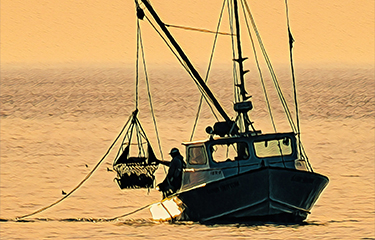Seafood Watch draft report hits Chespeake Bay oysters with "avoid" rating

A Monterey Bay Aquarium Seafood Watch program draft assessment downgrades the eastern oyster (Crassostrea virginica) caught in the Chesapeake Bay “avoid," drawing criticism from scientists, officials, conservationists, and fishers.
The draft report rated wild-caught oysters in the U.S. states of Maryland and Virginia harvested both with hand implements and towed dredges as seafood to avoid, citing a “high concern” for the status of the stock and of the management of the fishery.
Seafood Watch’s draft assessment said the fishery experienced “a notable decline in abundance” and that the reference points for stock assessments in Maryland were based on periods of “historically low abundance.”
“The reference points used in the stock assessment are not appropriate for the stock,” the draft report states.
The report also criticizes the status of Virginia’s stock, based on “strong signs of being overfished.”
Officials with the Maryland Department of Natural Resources told the Bay Journal the studies used by Seafood Watch in its draft report were flawed, and no one contacted the department at any time about their methodology.
“There’s missing information, there’s outdated information. They have misinterpreted information, and they have failed to live up to their own standards of using the best science and collaborating,” DNR Secretary for Aquatic Resources Kristen Fidler said.
Biologists with the Virginia Institute of Marine Science also told the Bay Journal that the Seafood Watch ratings of the fishery were based on “old data and are entirely inappropriate.” Data cited regarding abundance being “a high concern” was more than a decade old, they said.
University of Maryland Center for Environmental Science Scientist Mike Wilberg, who helped lead the development of the state’s stock assessments, also criticized the Seafood Watch rating and told the Bay Journal it didn’t take into account the complexities of the oyster population.
“The devil is in the details,” Wilberg said.
Virginia oysters were rated a good choice by Seafood Watch in 2018, the highest rating the organization bestows. Since that time, the oyster fishery has “steadily improved,” Virginia Waterman’s Association President JC Hudgins told the media. Last year, reef surveys found the highest oyster densities since before diseases struck the species in the late 1980s.
The Chesapeake Bay Foundation Maryland Director Allison Colden, who is also a fisheries biologist, also criticized the draft report’s stance considering a new update on the oyster population is coming soon.
Despite the criticism of the report and the relative increase in oyster population in the bay, NOAA Fisheries acknowledges that the oyster population in the Chesapeake Bay is at a fraction of its historic population, with only 1 to 2 percent remaining in the wild compared to historic highs. NOAA has created a “blueprint” to restore oysters to the bay, and has partnered with the Chesapeake Bay Program to restore oysters to 10 tributaries to the bay by 2025.
Photo courtesy of Pat Anderson Photo/Shutterstock






Share